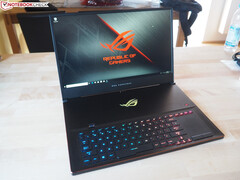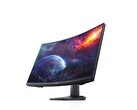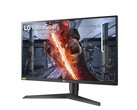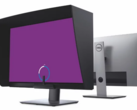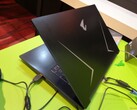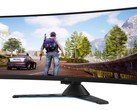(January 13, 2020 update: Razer, Acer, and Asus are now offering 300 Hz panels for their latest gaming laptops. These high refresh rate panels are now the fastest available on a consumer laptop. The table below has been updated to include 300 Hz panels.)
Acer and Asus recently announced gaming laptops with 300 Hz display options at IFA 2019 and more OEMs are likely to follow sooner rather than later. These 300 Hz panels are the latest in high refresh rate laptop displays that began with 120 Hz in 2017 followed by 144 Hz in 2018 and 240 Hz in early 2019.
But are these super fast refresh rates really necessary?
There is a misconception that if you own a high refresh rate monitor, then your frame rates when gaming must be able to match the high native refresh rate of the display or else there would be no point in having a high refresh rate monitor in the first place. This fallacy probably stems from the fact that many PC gamers with 60 Hz displays have grown accustomed to targeting 60 FPS for years. If you have a 300 Hz display, then you'd want to aim for 300 FPS too, right?
You *do* want your frame rates to match the native refresh rate of your monitor in order to fully exploit the monitor, but that would be unrealistic for high refresh rate displays in a lot of cases. Instead, users are forgetting about the high number of divisors that high refresh rate monitors offer over 60 Hz displays.
When gaming on a 60 Hz monitor with no FreeSync or G-Sync, you're essentially limited to 30 FPS or 60 FPS as anything slower, faster, or in between would introduce screen tearing or be too sluggish for gameplay. On a 120 Hz monitor, however, you can instead target a higher stable frame rate of 40 with no screen tearing since 40 is a divisor of 120. Targeting 40 FPS instead of 60 FPS or 120 FPS in this example is usually easier on budget to mid-range gaming laptops like the 120 Hz Asus TUF FX505DT.
The number of "screen tear-free" FPS targets only increases when you move up to 240 Hz or 300 Hz as shown by the table below.
| Native Monitor Refresh Rate | Divisors Over 15 |
|---|---|
| 60 Hz | 20, 30, 60 |
| 120 Hz | 20, 24, 30, 40, 60, 120 |
| 144 Hz | 24, 36, 48, 72, 144 |
| 240 Hz | 20, 24, 30, 40, 48, 60, 80, 120, 240 |
| 300 Hz | 20, 25, 30, 50, 60, 75, 100, 150, 300 |
Vsync in particular benefits greatly from high refresh rate monitors. On a 60 Hz display, Vsync may cause steep frame rate drops from 60 FPS to 30 FPS or slower to be very noticeable and unfavorable for gamers. In contrast, any frame dips on a 240 Hz display with Vsync enabled are likely to be shallower and thus less noticeable during gameplay since there are more divisible numbers. Both responsiveness and refresh intervals will be faster than a 60 Hz display.
We're not advocating 300 Hz or even 240 Hz monitors. In fact, we can barely tell the difference between 144 Hz and 240 Hz on laptops let alone 300 Hz. Diminishing returns will begin to kick in if they haven't already for most users. If you have a 300 Hz display and can reach a stable 300 FPS, then all the more power to you. But for everybody else, you can aim for lower frame rates and still reap the benefits of a high refresh rate display which will be the more likely scenario on a laptop.




